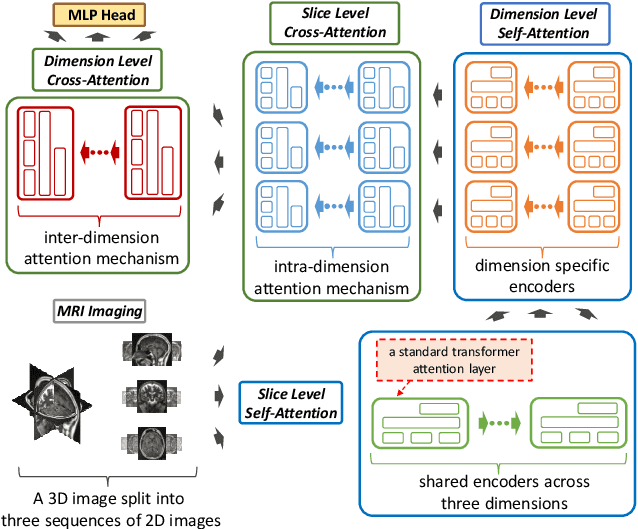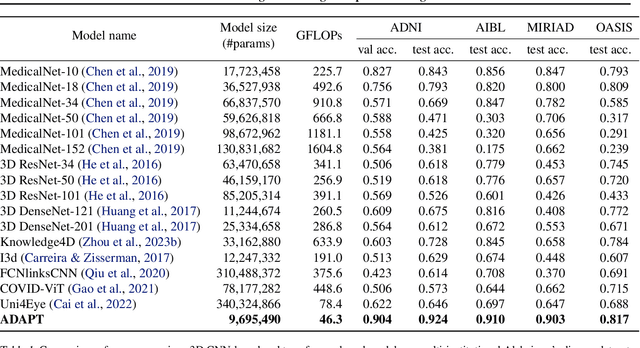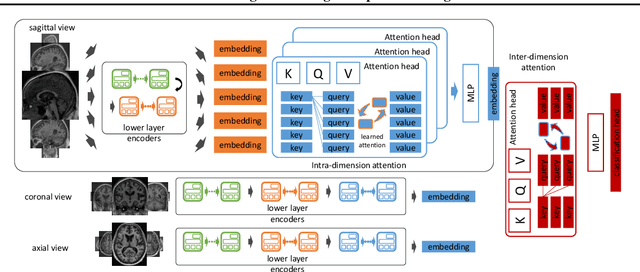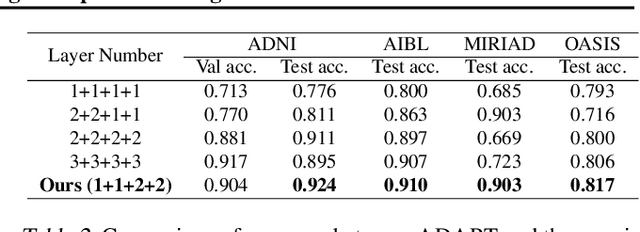Haohan Wang
Jailbreaking Large Language Models Against Moderation Guardrails via Cipher Characters
May 30, 2024Abstract:Large Language Models (LLMs) are typically harmless but remain vulnerable to carefully crafted prompts known as ``jailbreaks'', which can bypass protective measures and induce harmful behavior. Recent advancements in LLMs have incorporated moderation guardrails that can filter outputs, which trigger processing errors for certain malicious questions. Existing red-teaming benchmarks often neglect to include questions that trigger moderation guardrails, making it difficult to evaluate jailbreak effectiveness. To address this issue, we introduce JAMBench, a harmful behavior benchmark designed to trigger and evaluate moderation guardrails. JAMBench involves 160 manually crafted instructions covering four major risk categories at multiple severity levels. Furthermore, we propose a jailbreak method, JAM (Jailbreak Against Moderation), designed to attack moderation guardrails using jailbreak prefixes to bypass input-level filters and a fine-tuned shadow model functionally equivalent to the guardrail model to generate cipher characters to bypass output-level filters. Our extensive experiments on four LLMs demonstrate that JAM achieves higher jailbreak success ($\sim$ $\times$ 19.88) and lower filtered-out rates ($\sim$ $\times$ 1/6) than baselines.
The Devil is in the Edges: Monocular Depth Estimation with Edge-aware Consistency Fusion
Mar 30, 2024Abstract:This paper presents a novel monocular depth estimation method, named ECFNet, for estimating high-quality monocular depth with clear edges and valid overall structure from a single RGB image. We make a thorough inquiry about the key factor that affects the edge depth estimation of the MDE networks, and come to a ratiocination that the edge information itself plays a critical role in predicting depth details. Driven by this analysis, we propose to explicitly employ the image edges as input for ECFNet and fuse the initial depths from different sources to produce the final depth. Specifically, ECFNet first uses a hybrid edge detection strategy to get the edge map and edge-highlighted image from the input image, and then leverages a pre-trained MDE network to infer the initial depths of the aforementioned three images. After that, ECFNet utilizes a layered fusion module (LFM) to fuse the initial depth, which will be further updated by a depth consistency module (DCM) to form the final estimation. Extensive experimental results on public datasets and ablation studies indicate that our method achieves state-of-the-art performance. Project page: https://zrealli.github.io/edgedepth.
Towards Adversarially Robust Dataset Distillation by Curvature Regularization
Mar 15, 2024



Abstract:Dataset distillation (DD) allows datasets to be distilled to fractions of their original size while preserving the rich distributional information so that models trained on the distilled datasets can achieve a comparable accuracy while saving significant computational loads. Recent research in this area has been focusing on improving the accuracy of models trained on distilled datasets. In this paper, we aim to explore a new perspective of DD. We study how to embed adversarial robustness in distilled datasets, so that models trained on these datasets maintain the high accuracy and meanwhile acquire better adversarial robustness. We propose a new method that achieves this goal by incorporating curvature regularization into the distillation process with much less computational overhead than standard adversarial training. Extensive empirical experiments suggest that our method not only outperforms standard adversarial training on both accuracy and robustness with less computation overhead but is also capable of generating robust distilled datasets that can withstand various adversarial attacks.
Approximate Nullspace Augmented Finetuning for Robust Vision Transformers
Mar 15, 2024



Abstract:Enhancing the robustness of deep learning models, particularly in the realm of vision transformers (ViTs), is crucial for their real-world deployment. In this work, we provide a finetuning approach to enhance the robustness of vision transformers inspired by the concept of nullspace from linear algebra. Our investigation centers on whether a vision transformer can exhibit resilience to input variations akin to the nullspace property in linear mappings, implying that perturbations sampled from this nullspace do not influence the model's output when added to the input. Firstly, we show that for many pretrained ViTs, a non-trivial nullspace exists due to the presence of the patch embedding layer. Secondly, as nullspace is a concept associated with linear algebra, we demonstrate that it is possible to synthesize approximate nullspace elements for the non-linear blocks of ViTs employing an optimisation strategy. Finally, we propose a fine-tuning strategy for ViTs wherein we augment the training data with synthesized approximate nullspace noise. After finetuning, we find that the model demonstrates robustness to adversarial and natural image perbutations alike.
Beyond Finite Data: Towards Data-free Out-of-distribution Generalization via Extrapolation
Mar 11, 2024Abstract:Out-of-distribution (OOD) generalization is a favorable yet challenging property for deep neural networks. The core challenges lie in the limited availability of source domains that help models learn an invariant representation from the spurious features. Various domain augmentation have been proposed but largely rely on interpolating existing domains and frequently face difficulties in creating truly "novel" domains. Humans, on the other hand, can easily extrapolate novel domains, thus, an intriguing question arises: How can neural networks extrapolate like humans and achieve OOD generalization? We introduce a novel approach to domain extrapolation that leverages reasoning ability and the extensive knowledge encapsulated within large language models (LLMs) to synthesize entirely new domains. Starting with the class of interest, we query the LLMs to extract relevant knowledge for these novel domains. We then bridge the gap between the text-centric knowledge derived from LLMs and the pixel input space of the model using text-to-image generation techniques. By augmenting the training set of domain generalization datasets with high-fidelity, photo-realistic images of these new domains, we achieve significant improvements over all existing methods, as demonstrated in both single and multi-domain generalization across various benchmarks. With the ability to extrapolate any domains for any class, our method has the potential to learn a generalized model for any task without any data. To illustrate, we put forth a much more difficult setting termed, data-free domain generalization, that aims to learn a generalized model in the absence of any collected data. Our empirical findings support the above argument and our methods exhibit commendable performance in this setting, even surpassing the supervised setting by approximately 1-2\% on datasets such as VLCS.
Toward a Team of AI-made Scientists for Scientific Discovery from Gene Expression Data
Feb 21, 2024



Abstract:Machine learning has emerged as a powerful tool for scientific discovery, enabling researchers to extract meaningful insights from complex datasets. For instance, it has facilitated the identification of disease-predictive genes from gene expression data, significantly advancing healthcare. However, the traditional process for analyzing such datasets demands substantial human effort and expertise for the data selection, processing, and analysis. To address this challenge, we introduce a novel framework, a Team of AI-made Scientists (TAIS), designed to streamline the scientific discovery pipeline. TAIS comprises simulated roles, including a project manager, data engineer, and domain expert, each represented by a Large Language Model (LLM). These roles collaborate to replicate the tasks typically performed by data scientists, with a specific focus on identifying disease-predictive genes. Furthermore, we have curated a benchmark dataset to assess TAIS's effectiveness in gene identification, demonstrating our system's potential to significantly enhance the efficiency and scope of scientific exploration. Our findings represent a solid step towards automating scientific discovery through large language models.
GUARD: Role-playing to Generate Natural-language Jailbreakings to Test Guideline Adherence of Large Language Models
Feb 05, 2024



Abstract:The discovery of "jailbreaks" to bypass safety filters of Large Language Models (LLMs) and harmful responses have encouraged the community to implement safety measures. One major safety measure is to proactively test the LLMs with jailbreaks prior to the release. Therefore, such testing will require a method that can generate jailbreaks massively and efficiently. In this paper, we follow a novel yet intuitive strategy to generate jailbreaks in the style of the human generation. We propose a role-playing system that assigns four different roles to the user LLMs to collaborate on new jailbreaks. Furthermore, we collect existing jailbreaks and split them into different independent characteristics using clustering frequency and semantic patterns sentence by sentence. We organize these characteristics into a knowledge graph, making them more accessible and easier to retrieve. Our system of different roles will leverage this knowledge graph to generate new jailbreaks, which have proved effective in inducing LLMs to generate unethical or guideline-violating responses. In addition, we also pioneer a setting in our system that will automatically follow the government-issued guidelines to generate jailbreaks to test whether LLMs follow the guidelines accordingly. We refer to our system as GUARD (Guideline Upholding through Adaptive Role-play Diagnostics). We have empirically validated the effectiveness of GUARD on three cutting-edge open-sourced LLMs (Vicuna-13B, LongChat-7B, and Llama-2-7B), as well as a widely-utilized commercial LLM (ChatGPT). Moreover, our work extends to the realm of vision language models (MiniGPT-v2 and Gemini Vision Pro), showcasing GUARD's versatility and contributing valuable insights for the development of safer, more reliable LLM-based applications across diverse modalities.
Robust Prompt Optimization for Defending Language Models Against Jailbreaking Attacks
Feb 02, 2024Abstract:Despite advances in AI alignment, language models (LM) remain vulnerable to adversarial attacks or jailbreaking, in which adversaries modify input prompts to induce harmful behavior. While some defenses have been proposed, they focus on narrow threat models and fall short of a strong defense, which we posit should be effective, universal, and practical. To achieve this, we propose the first adversarial objective for defending LMs against jailbreaking attacks and an algorithm, robust prompt optimization (RPO), that uses gradient-based token optimization to enforce harmless outputs. This results in an easily accessible suffix that significantly improves robustness to both jailbreaks seen during optimization and unknown, held-out jailbreaks, reducing the attack success rate on Starling-7B from 84% to 8.66% across 20 jailbreaks. In addition, we find that RPO has a minor effect on benign use, is successful under adaptive attacks, and can transfer to black-box models, reducing the success rate of the strongest attack on GPT-4, GUARD, from 92% to 6%.
MedTransformer: Accurate AD Diagnosis for 3D MRI Images through 2D Vision Transformers
Jan 12, 2024



Abstract:Automated diagnosis of AD in brain images is becoming a clinically important technique to support precision and efficient diagnosis and treatment planning. A few efforts have been made to automatically diagnose AD in magnetic resonance imaging (MRI) using three-dimensional CNNs. However, due to the complexity of 3D models, the performance is still unsatisfactory, both in terms of accuracy and efficiency. To overcome the complexities of 3D images and 3D models, in this study, we aim to attack this problem with 2D vision Transformers. We propose a 2D transformer-based medical image model with various transformer attention encoders to diagnose AD in 3D MRI images, by cutting the 3D images into multiple 2D slices.The model consists of four main components: shared encoders across three dimensions, dimension-specific encoders, attention across images from the same dimension, and attention across three dimensions. It is used to obtain attention relationships among multiple sequences from different dimensions (axial, coronal, and sagittal) and multiple slices. We also propose morphology augmentation, an erosion and dilation based method to increase the structural difference between AD and normal images. In this experiment, we use multiple datasets from ADNI, AIBL, MIRAID, OASIS to show the performance of our model. Our proposed MedTransformer demonstrates a strong ability in diagnosing AD. These results demonstrate the effectiveness of MedTransformer in learning from 3D data using a much smaller model and its capability to generalize among different medical tasks, which provides a possibility to help doctors diagnose AD in a simpler way.
Generate E-commerce Product Background by Integrating Category Commonality and Personalized Style
Dec 20, 2023Abstract:The state-of-the-art methods for e-commerce product background generation suffer from the inefficiency of designing product-wise prompts when scaling up the production, as well as the ineffectiveness of describing fine-grained styles when customizing personalized backgrounds for some specific brands. To address these obstacles, we integrate the category commonality and personalized style into diffusion models. Concretely, we propose a Category-Wise Generator to enable large-scale background generation for the first time. A unique identifier in the prompt is assigned to each category, whose attention is located on the background by a mask-guided cross attention layer to learn the category-wise style. Furthermore, for products with specific and fine-grained requirements in layout, elements, etc, a Personality-Wise Generator is devised to learn such personalized style directly from a reference image to resolve textual ambiguities, and is trained in a self-supervised manner for more efficient training data usage. To advance research in this field, the first large-scale e-commerce product background generation dataset BG60k is constructed, which covers more than 60k product images from over 2k categories. Experiments demonstrate that our method could generate high-quality backgrounds for different categories, and maintain the personalized background style of reference images. The link to BG60k and codes will be available soon.
 Add to Chrome
Add to Chrome Add to Firefox
Add to Firefox Add to Edge
Add to Edge